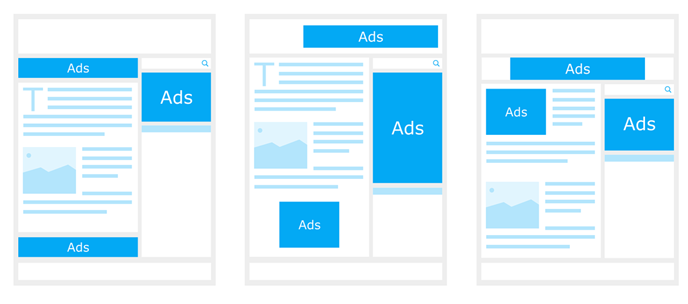It know. It has been said many times before on this blog and elsewhere on the web that you can do a lot better than Google AdSense when it comes to monetizing your website. It’s true. Targeted affiliate offers, “influencer” campaigns, native advertising, and selling your own products and services are just a few of the more lucrative options.
But we all have to start somewhere, and even if you’ve been blogging for some time already, there are few monetization strategies quite as easy and accessible as Google AdSense. You can fiddle with the settings and placements in a myriad of ways, but to get started, it really can be a matter of set it and forget it.
How you choose to “set it,” however, could be changing significantly, because Google has made a rather big change to how AdSense units will operate on your website.

For the longest time, Google set forth a rather hard and fast rule about how many ad units you can place on any single page. This was strictly enforced and made it crystal clear just how far you could go with AdSense on your blog.
On any page, you could have no more than:
- Up to three AdSense for content units
- Up to three link units
- Up to two search boxes
Black and white. Clear as day. Those are the rules and you had to stick to them. But the rules have now changed. If you look at the support page for Google AdSense, you’ll now find the following wording in regards to the maximum number of displayed ads:
Advertising and other paid promotional material added to your pages should not exceed your content. Furthermore, the content you provide should add value and be the focal point for users visiting your page. For this reason, we may limit or disable ad serving on pages with little to no value and/or excessive advertising until changes are made.
So, what does this actually mean? Whereas the previous rules were very specific about what was and was not allowed, the new rules leave a lot more for interpretation. Does this mean that your ad units can take up no more than 49% of the total screen real estate? And what does Google really mean by adding “value” and being the “focal point for users” who are visiting your page?
It’s also very important to note here that Google makes reference to “advertising and other paid promotional material,” and not just AdSense units in particular. If you are running other ad networks, including affiliate links and banners, that could impact whether or not your AdSense ad unit will even show up.
On a client site where I have been contributing regularly, I already noticed that the AdSense unit has blanked out into an empty white square. This is despite the fact that we believe we are providing “value” to readers and the core content is the “focal point” for users. Google must think otherwise. And as with so many other matters related to Google, appealing this decision is frustrating at best.
On the AdSense support page, the explanation continues with a partial list of “unacceptable pages.”
- Mirroring, framing, scraping or rewriting of content from other sources without adding value;
- Pages with more advertising than publisher-provided content;
- Automatically generated content without manual review or curation;
- Hosted ad pages or pages without content;
- Pages that don’t follow our Webmaster Quality Guidelines.
“Scraping” content has been bad for a while in the eyes of Google with regards to search engine optimization, but now it extends to how AdSense works too. Even if you’re not scraping, but you’re rewriting related content, that’s not good enough either.
And that’s really what all of this boils down to. You need to be original. You need to provide unique content. You need to offer true value to your readers that goes beyond regurgitating what they can find elsewhere on the web. And that original content needs to stand on its own with the advertising being of secondary interest and focus.
With these changes, it could become harder than ever to make any real money with AdSense at all. Given this, you have all the more reason to consider other possibilities for monetization.
